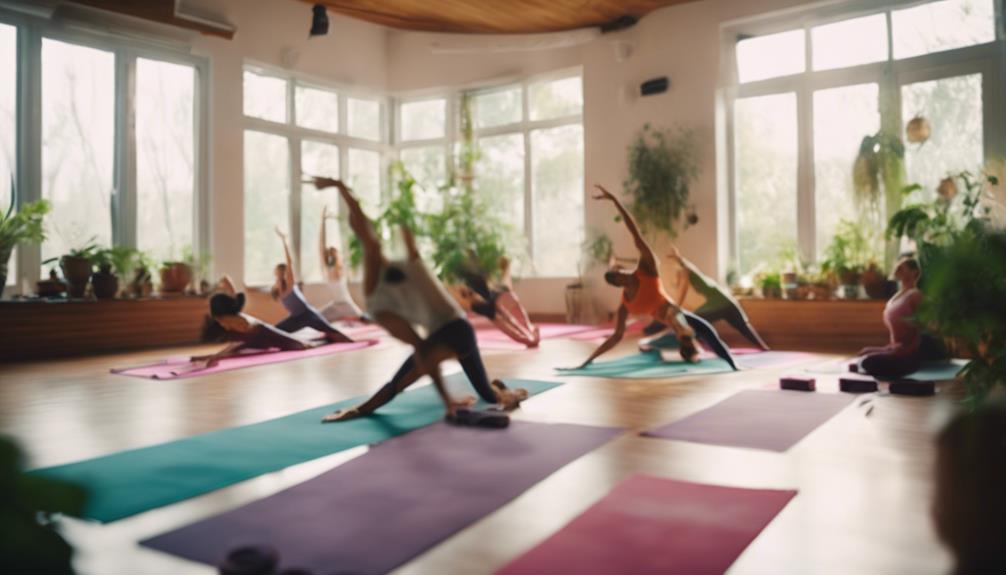Partner yoga, or two-person yoga, provides a unique opportunity for beginners to explore the practice of yoga in a supportive and interactive environment. This form of yoga encourages individuals to engage with one another physically and mentally, fostering a sense of connection and community. By practicing yoga together, beginners can enhance their experience, learn from one another, and develop a deeper understanding of the poses and techniques.
In this article, we will explore the benefits of partner yoga, essential tips for safe practice, and introduce a selection of basic poses that are perfect for those just starting their yoga journey together. Whether you are looking to strengthen your bond with a friend or simply want to experience yoga in a new way, two-person yoga can be a rewarding endeavor.Yoga Class HotYoga On The Rocks TicketsHard Tail Yoga Wear
Benefits of Practicing Partner Yoga Together
Practicing yoga with a partner offers a variety of benefits that can enhance the overall experience. One of the primary advantages is the encouragement and motivation that partners provide to one another. When practicing together, individuals may feel more inclined to push their limits, try new poses, and maintain their commitment to the practice. This shared experience can also help build accountability, making it easier to establish a regular yoga routine.
In addition to motivation, partner yoga fosters a sense of connection and intimacy. Engaging in two-person poses requires communication and cooperation, which can deepen relationships. As partners work together to achieve balance and alignment, they also cultivate trust and understanding. This unique dynamic can lead to improved emotional bonding and a greater sense of community, making yoga not just a physical practice, but also a social one.
Essential Tips for Safe Two-Person Yoga Practice
Safety is paramount when practicing partner yoga, especially for beginners. To ensure a safe experience, it is vital to communicate openly with your partner about comfort levels and any physical limitations. Establishing clear communication allows both individuals to voice their needs and make adjustments as necessary. It is also important to perform warm-up exercises to prepare the body for the physical demands of partner poses, reducing the risk of injury.
Another essential tip is to maintain awareness of each other’s body movements and positioning. Partners should pay close attention to their own bodies while also being mindful of their partner’s alignment. This can help prevent strain or injury caused by improper positioning. Additionally, practicing in a safe environment, free from distractions and hazards, further enhances the safety of the session.
Top 5 Basic Two-Person Yoga Poses to Start With
-
Double Downward Dog: This pose involves one partner in the traditional downward dog position while the other partner places their hands on the first partner’s lower back, creating a supportive arch. This pose helps to build strength and flexibility for both partners.
-
Partner Forward Fold: Standing back-to-back, both partners bend forward to touch their toes. This pose encourages stretching of the hamstrings and spine while fostering a sense of connection as partners share the pose.
-
Seated Twist: Sitting side by side, partners can twist toward each other, grasping each other’s hands or shoulders for support. This pose promotes spinal flexibility and enhances communication and connection between partners.
-
Supported Warrior III: One partner balances on one leg while the other assists by holding the raised leg. This pose helps to improve balance and focus while providing support and trust between partners.
-
Partner Tree Pose: Standing side by side, partners can press their outer thighs together for stability while each placing their opposite foot against their inner thigh. This pose fosters balance, focus, and connection.
How to Communicate Effectively During Partner Yoga
Effective communication is crucial in partner yoga to ensure a safe and enjoyable experience. Partners should establish a dialogue before beginning the session to discuss any limitations, preferences, or concerns. It is important to create a comfortable atmosphere where both individuals feel free to express their needs and expectations throughout the practice.
During the session, partners can use verbal cues or hand signals to communicate adjustments or modifications as they move through poses. Maintaining an open line of communication helps partners to feel supported and allows for immediate feedback, promoting a more harmonious practice. Additionally, taking breaks to check in with one another fosters a collaborative spirit, enhancing the overall experience.
Modifications for Beginners in Partner Yoga Poses
For beginners, it is important to remember that partner yoga should be tailored to each individual’s skill level and physical capabilities. Modifications can be made to various poses to ensure that both partners feel comfortable and supported. For example, if one partner is struggling with balance in a standing pose, using a wall or chair for support can help maintain stability.
Additionally, partners can adjust the depth of their poses based on their flexibility and strength. If one partner is unable to reach the same depth in a pose, the other partner can provide gentle assistance or simply modify their position to accommodate their partner’s needs. By prioritizing comfort and safety, both partners can engage in a fulfilling and enjoyable yoga experience.
Building Trust and Connection Through Yoga Together
Partner yoga provides a unique opportunity to build trust and deepen connections between partners. As individuals work together to achieve balance and maintain poses, they cultivate a sense of reliance on one another. This reliance can enhance emotional bonds, promoting a greater sense of intimacy and understanding.
The act of supporting one another in challenging poses can also foster vulnerability and trust. As partners navigate the challenges of partner yoga, they create a space where they can openly express their thoughts and feelings. This shared experience not only strengthens relationships but also encourages personal growth and self-awareness.
Breathing Techniques for Two-Person Yoga Practices
Breathing is a fundamental aspect of yoga that can be particularly enriching in partner practices. Developing synchronized breath with a partner can enhance the connection between individuals, promoting feelings of unity. To achieve this, partners can start by inhaling and exhaling together, allowing their breaths to flow in harmony as they move through poses.
Incorporating specific breathing techniques, such as diaphragmatic breathing or pranayama, can further enhance the experience. Encouraging each other to focus on deep, mindful breaths can help both partners stay grounded and present during their practice. This mindfulness can also alleviate tension, promoting relaxation and enhancing overall well-being.
Common Mistakes to Avoid in Partner Yoga Sessions
While partner yoga can be a rewarding experience, there are common mistakes that beginners should be cautious of. One significant mistake is rushing through poses or forcing them without proper alignment. This can lead to injuries and discomfort, detracting from the overall experience. It is crucial for partners to take their time, focusing on alignment and form rather than speed.
Another common mistake is neglecting communication. Without clear communication, partners may mistakenly assume they are on the same page, leading to potential misunderstandings and discomfort. Regular check-ins and maintaining an open dialogue can help prevent these issues and enhance the overall quality of the practice.
Partner yoga offers a wonderful way for beginners to explore the practice while building connections and trust with one another. By focusing on safe practices, effective communication, and modifications, partners can enjoy a fulfilling experience that enhances their physical and emotional well-being. As you embark on your partner yoga journey, remember to embrace the process, celebrate your progress, and enjoy the shared moments of joy and connection. Whether you’re practicing with a friend, family member, or loved one, partner yoga can be a transformative and enriching experience for all involved.


